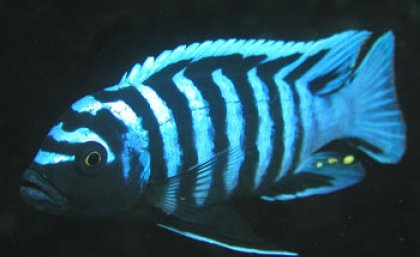
Neurobiologists at the Queensland Brain Institute have found that animals are not always as brightly coloured as they seem – at least not to their counterparts.
Researchers have delved deep inside the eye of the brightly coloured cichlid fish – which many people would recognise from their aquariums at home – to observe its vision from the inside out. In doing so they have found the animals are camouflaged to other cichlids.
“When you compare humans to many of the animals who are using colour we are comparatively colour blind,” researcher Professor Justin Marshall said.
“When you start to look at the animal through the animal’s eyes, they are well camouflaged. Many of the brightly coloured reef fish are in fact very well camouflaged to the eyes of the animals themselves.”
The research, which features on the cover of the latest edition of the Journal of Experimental Biology, focused on cichlids in Lake Malawi in southern Africa. Scientists found cichlids could see ultra-violet colours, making their sight much better than that of humans, who can only see the basic red, green and blue spectrums.
The scientists also studied the cichlid’s sexual communication and found that while female cichlids are brightly coloured to the human eye, they are relatively inconspicuous to their potential mating partners. Conversely, the males appear brightly coloured to the females and stand out in much the same way as a bowerbird.
“The males have to make themselves stand out. It’s definitely worth it because it shows the female they are fit and healthy,” Professor Marshall said.
Further, the neurobiologist said cichlids provided a fascinating research model for scientists, as they had evolved very quickly over the last million years.
“Understanding the eyes and the way in which they’re put together and what advantage they give to the animal’s sensory systems is very important for future discoveries,” Professor Marshall said.
Media: Anna Bednarek at the QBI (+61 7 3346 6414, a.bednarek@uq.edu.au)
.jpg)



